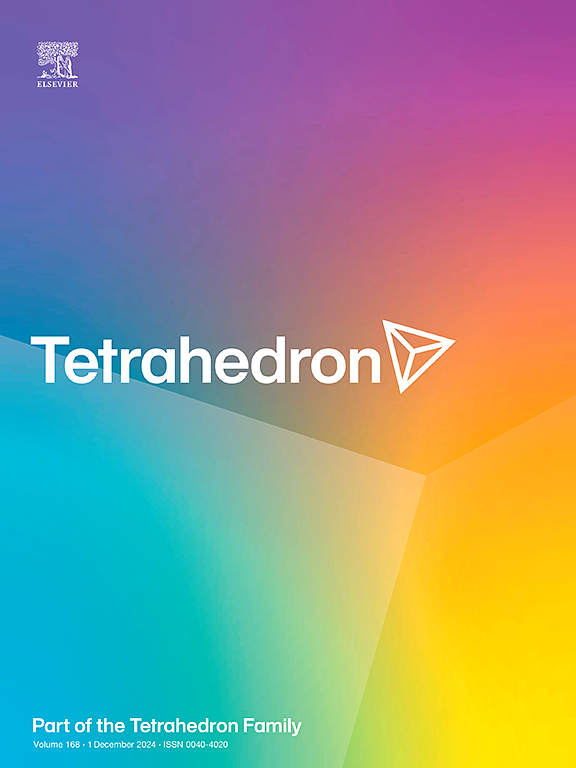利用芳偶氮硫代甲酰胺配体配合物催化铜(I)炔叠氮化环加成(CuAAC)
IF 2.2
3区 化学
Q2 CHEMISTRY, ORGANIC
引用次数: 0
摘要
偶氮甲酰胺(ATF)配体通过1,3-重氮硫羰基部分与铜(I)盐快速配位,形成稳定的铜(I)配合物。本研究以对甲氧基苯基偶氮甲酰胺(p-MeOATF)配体和碘化铜(I)为催化剂,制备了一种二聚体配合物,用于三组分铜(I)炔叠氮环加成(CuAAC)反应。反应优化表明,以2 mol%的[(p-MeOATF)CuI]2配合物和1.2 mol / l的烷基卤化物和叠氮化钠在1:1的水/甲醇溶剂中反应24 h,得到了11个产率在60 - 93%之间的1,2,3-三唑产品。由于已知ATFs可以氧化去除材料中的金属,因此在药物rufinamide的正式合成过程中对铜的去除进行了测试,为限制CuAAC反应产物中的铜含量提供了一种有前途的方法。本文章由计算机程序翻译,如有差异,请以英文原文为准。

Catalytic copper(I) alkyne-azide cycloaddition (CuAAC) utilizing arylazothioformamide ligand complexes
Azothioformamide (ATF) ligands have been shown to rapidly coordinate with copper(I) salts through a 1,3-diazothiocarbonyl moiety to form stable copper(I) complexes. In this work, a dimeric complex derived from p-methoxyphenyl azothioformamide (p-MeOATF) ligands and copper(I) iodide was employed as a catalyst for an aqueous three component copper(I) alkyne-azide cycloaddition (CuAAC) reaction. Reaction optimization identified that using 2 mol% of the [(p-MeOATF)CuI]2 complex and 1.2 equiv. each of the alkyl halide and sodium azide in 1:1 water/methanol as solvent for 24 h gave high yields of 1,2,3-triazole products with 11 examples ranging in yields of 60–93 %. As ATFs are known to oxidatively remove metals from materials, the removal of copper during the formal synthesis of the pharmaceutical rufinamide was tested as to offer a promising approach to limiting copper content in CuAAC reaction products.
求助全文
通过发布文献求助,成功后即可免费获取论文全文。
去求助
来源期刊

Tetrahedron
化学-有机化学
CiteScore
3.90
自引率
4.80%
发文量
439
审稿时长
34 days
期刊介绍:
Tetrahedron publishes full accounts of research having outstanding significance in the broad field of organic chemistry and its related disciplines, such as organic materials and bio-organic chemistry.
Regular papers in Tetrahedron are expected to represent detailed accounts of an original study having substantially greater scope and details than that found in a communication, as published in Tetrahedron Letters.
Tetrahedron also publishes thematic collections of papers as special issues and ''Reports'', commissioned in-depth reviews providing a comprehensive overview of a research area.
 求助内容:
求助内容: 应助结果提醒方式:
应助结果提醒方式:


